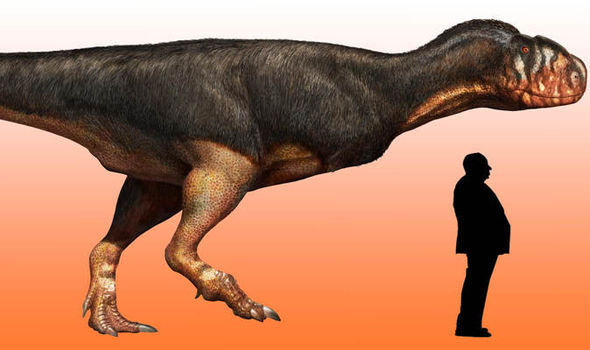Ferocious dinosaur found in Italy

Rome: In life, it was the biggest, most ferocious dinosaur of its era. In death, it was ripped to pieces by ancient sharks as they fought over its remains on the seabed.
Scientists have announced the discovery of a new species of carnivorous dinosaur that roamed Italy nearly 200 million years ago.
Saltriovenator zanellai was a 25ft-long, hulking beast that weighed at least a tonne, meaning that when it lived in the early Jurassic Period, it was the largest-known carnivorous dinosaur that had ever existed.
The discovery pushes back by 25 million years the known existence of big predator dinosaurs, although in later periods it was succeeded by even bigger dinosaurs.
“Saltriovenator predates the massive meat-eating dinosaurs by over 25 million years,” said Cristiano Dal Sasso, a paleontologist from the Natural History of Museum of Milan, who led the research which was published in PeerJ, the Journal of Life and Environmental Sciences.
The dinosaur’s fossils were found in a marble quarry near the village of Saltrio – hence the creature’s Latin appellation – which lies about 50 miles north of Milan in northern Italy, in the foothills of the Alps.
The discovery was made, close to the Swiss border, in 1996 but it has taken more than 20 years to extract the fossils from huge slabs of rock and to subject them to detailed analysis.
The rocks in which the fossils were contained had been blown apart by dynamite used by quarry workers, making the task of reconstruction even harder.
In the end, the paleontologists found 130 bone fragments, including pieces of the creature’s jaw, ribs, pectoral bones and a single tooth.
“The sort of paleontology you see in Indiana Jones films works well for cinema, but in reality the piecing together of a dinosaur skeleton is for the most part monotonous and repetitive work,” said Prof Dal Sasso.
The quarry in which the fossils were found has been producing marble since the 15th century and provided marble for the building of Milan’s La Scala Opera House in the late 18th century.
The dinosaur, which had sharp serrated teeth and formidable claws, lived in a coastal, humid environment around 198 million years ago in what is today the northern Italian region of Lombardy.
It was 24 years old when it died – not yet fully grown – and somehow ended up in the sea, perhaps carried down to the coast after falling into a river.
Marks on its fossilised bones suggest its body was feasted on by sharks and fish as well as urchins and marine worms.
“This is absolutely unique,” said Prof Dal Sasso. “In the scientific literature, there is mention of some dinosaur bones (being) scavenged by terrestrial animals, such as other dinosaurs, and, more rarely, insects. (But) at least three kinds of marine animals left traces on the bones of Saltriovenator.”
Saltriovenator – the name means “the hunter from Saltrio” – walked on two legs and is thought to have stalked smaller carnivorous dinosaurs as well as herbivorous dinosaurs.
The second half of the name is a tribute to Angelo Zanella, the amateur fossil hunter who found the remains while exploring the quarry two decades ago.





